Environmental Engineering Reference
In-Depth Information
Laboratory testing techniques and details pertaining to vari-
ous types of triaxial tests were explained and summarized by
Bishop and Henkel (1962).
The acceptability of the axis translation technique when
testing unsaturated soils was verified by Bishop and Blight
(1963). Compression tests were conducted on a compacted
Selset clay and Talybont clay. The experiments confirmed
the applicability of the axis translation technique for lab-
oratory tests on unsaturated soils. The ability of the pore-
water to withstand absolute tensions greater than 1 atm (i.e.,
101.3 kPa) was also confirmed.
The development of pore-air and pore-water pressures
during undrained tests was also studied by Bishop and Blight
(1963). Typical results of constant-water-content tests were
presented and discussed. Donald (1963) presented further
results of undrained tests on compacted Talybont clays with
pore-air and pore-water pressure measurements.
Blight (1967) reported the results of several consolidated
drained tests performed on unsaturated silt specimens. All
specimens were compacted and brought to equilibrium at
three matric suction values in a triaxial cell. In addition to
measuring the shear strength of the soil, the overall vol-
ume change and water volume change were independently
monitored. The results showed an increase in shear strength
with increasing matric suction and also with increasing net
confining pressure.
The shear strength of two unsaturated, compacted soils
from India, namely, Delhi silt and Dhanauri clay, were tested
by Satija and Gulhati (1979). Consolidated drained tests
were performed with the pore pressures being maintained
in a modified triaxial cell. Constant-water-content tests with
pore-air pressure control and pore-water pressure measure-
ment were also performed.
Fredlund et al., (1978) proposed the use of
σ
was similar to that used in the Imperial College research
program. Pore pressures were either controlled or measured
throughout the shear test. The appropriate strain rate was
found to decrease with decreasing degrees of saturation
(Satija and Gulhati, 1979). The results were presented as a
three-dimensional surface where half of the deviator stress
at
failure,
σ
1
−
σ
3
/
2
f
, was plotted versus the net
minor principal stress at failure,
σ
3
−
u
a
f
, and the matric
suction at failure,
u
a
−
u
w
f
(Gulhati and Satija, 1981).
A series of consolidated drained direct shear tests on
unsaturated Madrid grey clay were reported by Escario in
1980. The tests were performed under controlled matric
suction conditions using the axis translation technique. A
modified shear box device enclosed in a pressure chamber
was used to apply a controlled air pressure to the soil spec-
imen. The specimen was placed on a high-air-entry disk in
contact with water at atmospheric pressure. The soil speci-
mens were statically compacted and brought to the desired
matric suction under an applied vertical normal stress. Typ-
ical results obtained from direct shear tests are presented
in Fig. 11.23. The failure envelopes exhibit almost a par-
allel upward translation, indicating a continuous increase
in shear strength as soil matric suction was increased. The
results of triaxial tests by Escario (1980) on Madrid clay are
shown in Fig. 11.24. The triaxial cell was modified to allow
the use of the axis translation technique. The results show
Madrid grey clay (statically compacted)
Liquid limit = 81%
Plasticity index = 43%
ρ
d
,max
= 1360 kg/m
3
w
optimum
= 29%
AASHTO
−
u
a
and
u
a
−
u
w
as independent stress state variables for the descrip-
tion of the shear strength of unsaturated soils. The shear
strength of an unsaturated soil was considered to consist
of an effective cohesion intercept
c
and independent con-
tributions from the net normal stress
σ
ρ
d
,max
= 1335 kg/m
3
w
= 29%
u
a
-
u
w
= 700 kPa
Specimen
500
−
u
a
and matric
u
w
. The effective angle of internal friction,
φ
,
was associated with the shear strength contribution from the
net normal stress state variable. Another angle, namely
φ
b
,
was introduced to describe the increase in shear strength
as matric suction was increased. The failure envelope was
then viewed as a three-dimensional surface with
σ
suction
u
a
−
400
300
−
u
a
and
200
u
a
−
u
w
as variables on the abscissas. The failure surface
was visualized as an extension of the conventional Mohr-
Coulomb failure envelope (Fredlund, 1979). Data from the
research literature were used to examine the fit of the theory
to laboratory test results.
Satija (1978) conducted an experimental study on the
shear strength behavior of unsaturated Dhanauri clay.
Constant-water-content and consolidated drained tests were
conducted on compacted specimens for various values
of
σ
Zero matric
suction
100
0
0
100
200
300
400
500
600
700
800
Net normal stress (
σ
n
-
u
a
), kPa
Figure 11.23
Direct shear tests showing increase in shear
strength for Madrid clay as result of increasing matric suction (after
Escario, 1980).
−
u
a
and
u
a
−
u
w
stresses. The triaxial test apparatus



























Search WWH ::

Custom Search